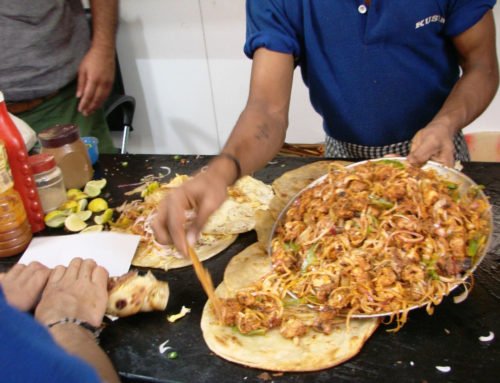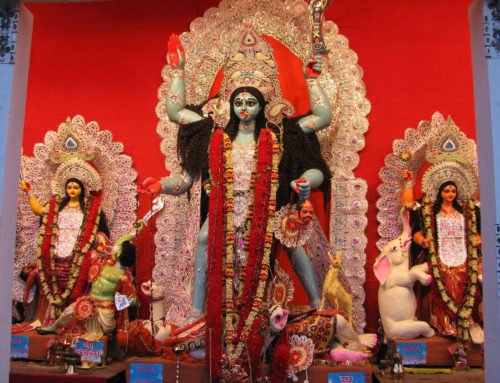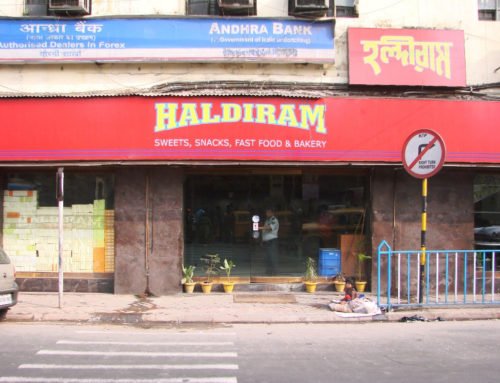Overview
- Features: 19th-century Classical mansion with an eclectic collection of antiques
- Opening Times: 10am to 4pm (Tue-Wed & Fri-Sun)
- Best Time to Visit: Late October to early March
- Duration: 1 to 2 hours
- Travelled By: Metro
- Cost: Free (Donation to guide)
- Address: 46 Muktaram Babu Street, Jorasanko, Kolkata, West Bengal, India
- Type: Museum, Mansion
Author Reviews[display_rating_item_results rating_form_id=”2″ rating_entry_ids=”1″ show_category_filter=”false” show_options=”true” result_type=”star_rating” preserve_max_rating=”true” show_title=”false” show_count=”false” ]
Total Rating: [display_rating_result rating_form_id=”2″ show_count=”false” show_rich_snippets=true] [accordions load=”1″] [accordion title=”User Reviews” last] [display_rating_item_results rating_form_id=”5″ show_options=”true” result_type=”star_rating” preserve_max_rating=”true” show_title=”false” show_count=”true” show_rich_snippets=true] [/accordion] [accordion title=”Add Review”][display_rating_form show_email_input=”true” show_comment_textarea=”true” show_name_input=”true” rating_form_id=”5″] [/accordion] [/accordions]
Summary
Located in northern Kolkata, Marble Palace is an opulent mansion with an Italianate courtyard, classical columns and Egyptian sphinxes built in 1835 by Raja Rajendra Mullick, a wealthy zamindar (landowner). Resplendent yet slightly run down, the galleries in this grand mansion are astonishingly overstuffed with statues, porcelain, clocks, mirrors, chandeliers and English (Reynolds), Dutch (Reubens) and Italian paintings.
Marble Palace Kolkata
Located in Chor Bagan (‘Thieves’ Garden’) up a back street in what was once known as Black Town, Marble Palace is an opulent mansion with an Italianate courtyard, classical columns and Egyptian sphinxes built in 1835 by Raja Rajendra Mullick, a wealthy zamindar (landowner). Six sleeping marble lions and statuary grace the lawns and there is a veritable menagerie at the back. Family members still inhabit a portion of the house while servants’ descendants live in the huts that encircle the grounds; however, most of the house is still open to visitors.
[singlepic id=472 w=720 h=560 float=center]
[singlepic id=469 w=720 h=560 float=center]
Rajendra Mullick, who had travelled extensively in Europe, brought back an eclectic collection of Venetian chandeliers, Ming vases and Egyptian statuary from over 90 countries. This collection is housed in his Classical-fronted mansion with enormous, dimly lit rooms that open off deep verandas around an inner courtyard. Nearly a hundred varieties of marble have been used on the floors and the dark halls are hung with paintings by European artists.
Resplendent yet slightly run down, the galleries in this grand mansion are astonishingly overstuffed with statues, porcelain, clocks, mirrors, Victorian and Belgian glassware and fine if bedraggled paintings including supposedly original works by Murillo, Joshua Reynolds and three by Rubens. Napoleons beat Wellingtons two to one in the music room, which is lavishly floored with multicolored marble inlay on a giant scale, with a calico effect. The ballroom retains its vast array of Venetian candle chandeliers with globes of silvered glass to spread illumination: original 19th-century disco balls! Even the lamps are detailed creations, especially those on the staircases, where metal women are entwined in trees with a light bulb on each branch. The solid rosewood statue of Queen Victoria is remarkable.
[singlepic id=468 w=720 h=560 float=center]
In the courtyard is the family temple, while the grounds have a rock garden and aviary, home to mynahs and peacocks.
Today, the Marble Palace provides a wonderful glimpse into the life of a rich 19th-century Bengal household. However, this palatial family home has seen better days, and is now the centre of a bitter feud between relatives, some of whom have been accused of sneaking off with the more valuable displays. Get there soon, since the feuding of the Mullicks makes it uncertain which prized item might next disappear.
Before arriving you need to get a permission note from the India Tourism Kolkata Office (4 Shakespeare Sarani, 10am to 6pm Mon-Fri, 10am-1pm Sat). With this note, admission is technically free. If you arrive without one, the guard will let you in for a small fee (although this simply adds to the culture of corruption in India). A guide (at times, a young boy trying to make pocket money) is sent with you but it’s pretty much a sham— insist on someone knowledgeable. The (obligatory) guide solicits tips of Rs 100 to 200 per group.
Photography is prohibited inside the grounds.
Getting to & from Marble Palace Kolkata
The easiest and most affordable way to get to Marble Palace is to take the Metro to Mahatma Gandhi Road metro station. From there, walk three blocks north to the first traffic light and turn west at 171 Chittaranjan Avenue. Buses also ply from all over Kolkata; ask for the Ram Mandir bus stop on Chittaranjan Avenue. Alternatively, you can get a taxi or hire a private car with chauffeur for the day.







